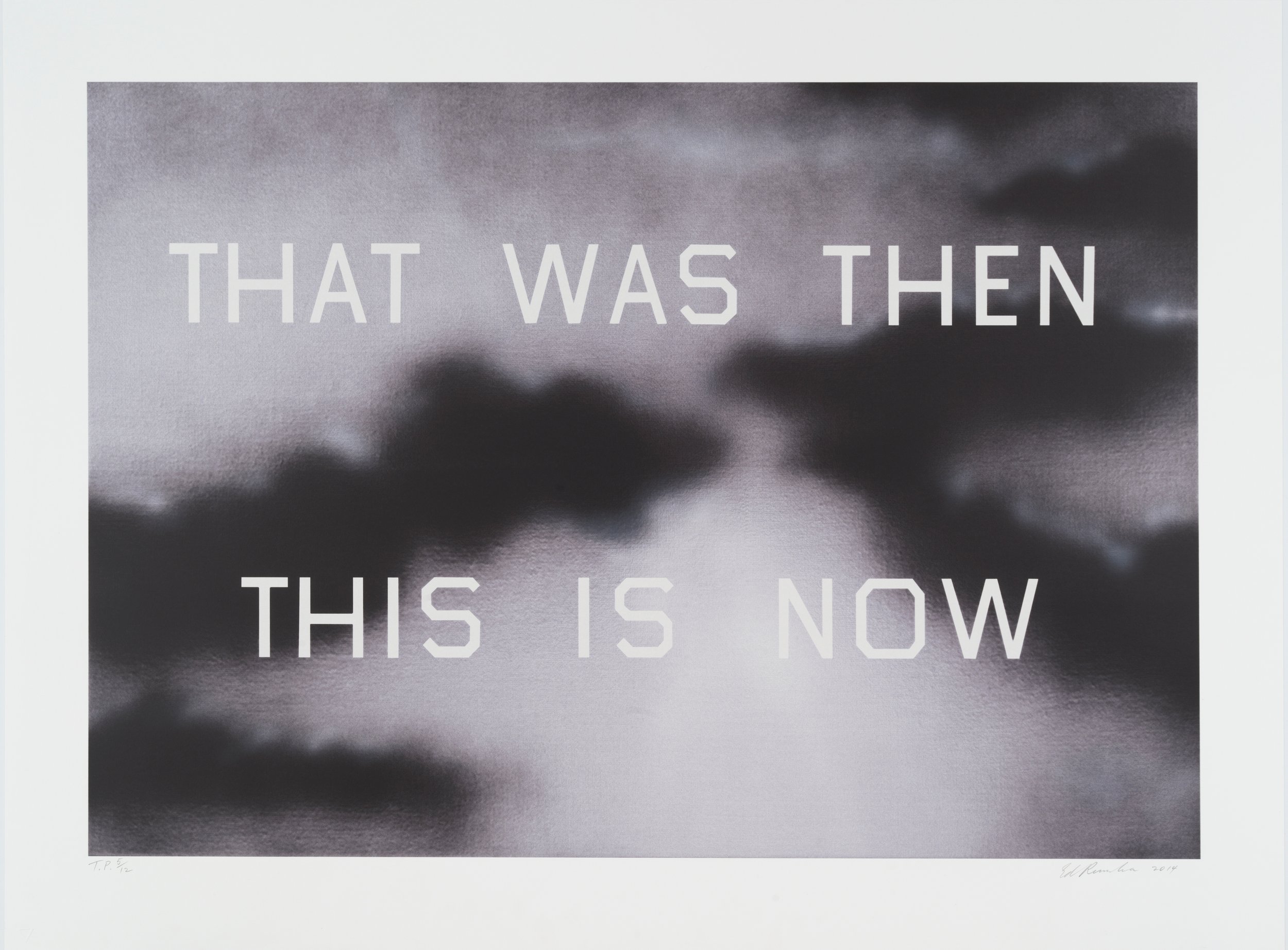ABOUT
There are things that I’m constantly looking at that I feel should be elevated to greater status, almost to philosophical status or to a religious status. That’s why taking things out of context is a useful tool to an artist. It’s the concept of taking something that’s not subject matter and making it subject matter.
—Ed Ruscha
Ed Ruscha is a pivotal figure in contemporary art, renowned for his innovative use of language, text, and imagery. His work seamlessly blends abstraction and the vernacular of American culture, challenging traditional boundaries between form, content, and meaning. Early in his career, Ruscha drew inspiration from the graphic language of advertising, redefining the role of text in art. His approach, infused with wit and humor, positions words not just as symbols but as objects in their own right, creating a dialogue between visual form and linguistic meaning.
Ruscha’s practice spans painting, photography, and artists' books, reflecting a deep engagement with American landscapes, urban environments, and the evolving nature of communication. His seminal work Twentysix Gasoline Stations (1963) and the expansive Every Building on the Sunset Strip (1966) exemplify his interest in documentation and the everyday. These works, along with his iconic text-based paintings such as OOF (1962–63), highlight his ability to capture the essence of the American experience, turning ordinary subjects into profound, often humorous, visual statements.
A central theme in Ruscha’s work is the tension between object and illusion. His paintings, often filled with bold, declarative text, engage the viewer in a complex interaction between visual and verbal language. His Course of Empire series (2005), shown at the Venice Biennale, reflects his ongoing exploration of cultural progress and decline, drawing on historical references to comment on modern life. Through these works, Ruscha critiques both the ideals of progress and the ever-changing nature of cultural communication.
In addition to his groundbreaking paintings and photographs, Ruscha’s contributions to the field of artists' books have further solidified his reputation as a conceptual innovator. His books, including On the Road (2009) and Hollywood (1989), are visual explorations of text, narrative, and form. These publications reveal his continued fascination with the written word as both artistic medium and cultural artifact, blurring the lines between fine art and popular culture.
Over the course of his career, Ruscha has exhibited extensively, including representing the United States at the 51st Venice Biennale in 2005. His work is housed in major collections worldwide, and he continues to influence contemporary art with his ever-evolving exploration of language, American identity, and the visual landscape. His legacy remains firmly rooted in his ability to make the mundane extraordinary and to challenge the very notion of what art can be.
SELECTED artWORKS
EXHIBITIONS
Ed Ruscha’s solo exhibitions have been presented at iconic venues such as the Museum of Modern Art, New York, NY; the Tate Modern, London, UK; and the Los Angeles County Museum of Art, Los Angeles, CA. He has shown his work in solo exhibitions at galleries including Gagosian, Los Angeles, CA; Hauser & Wirth, Los Angeles, CA; and the National Gallery of Art, Washington, D.C. Ruscha’s work has been featured in numerous group exhibitions at the Whitney Museum of American Art, New York, NY; the Guggenheim Museum, New York, NY; and the Venice Biennale, Venice, Italy. His work is part of major museum collections, including the Los Angeles County Museum of Art, Los Angeles, CA; the Museum of Modern Art, New York, NY; and the Tate Modern, London, UK.


